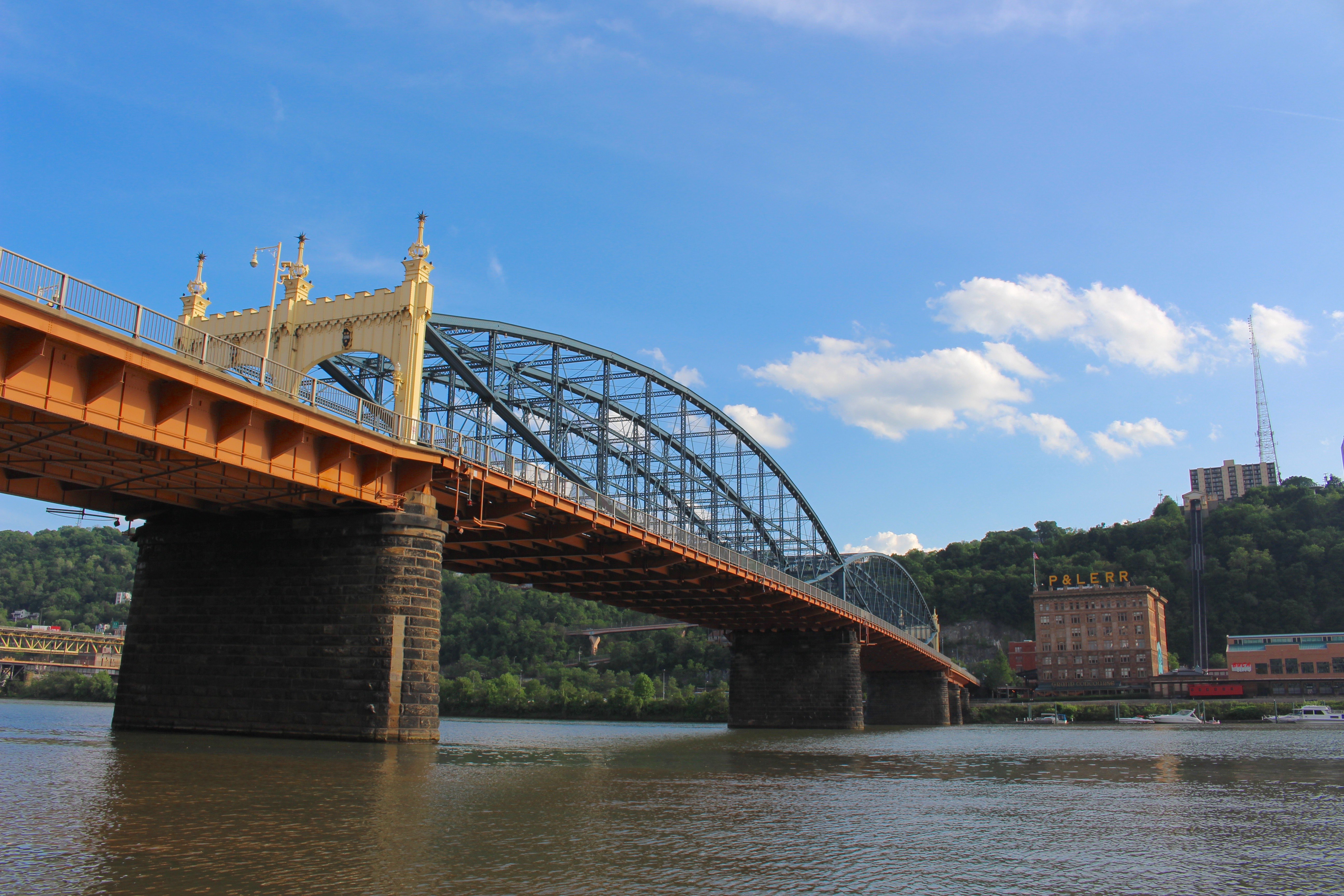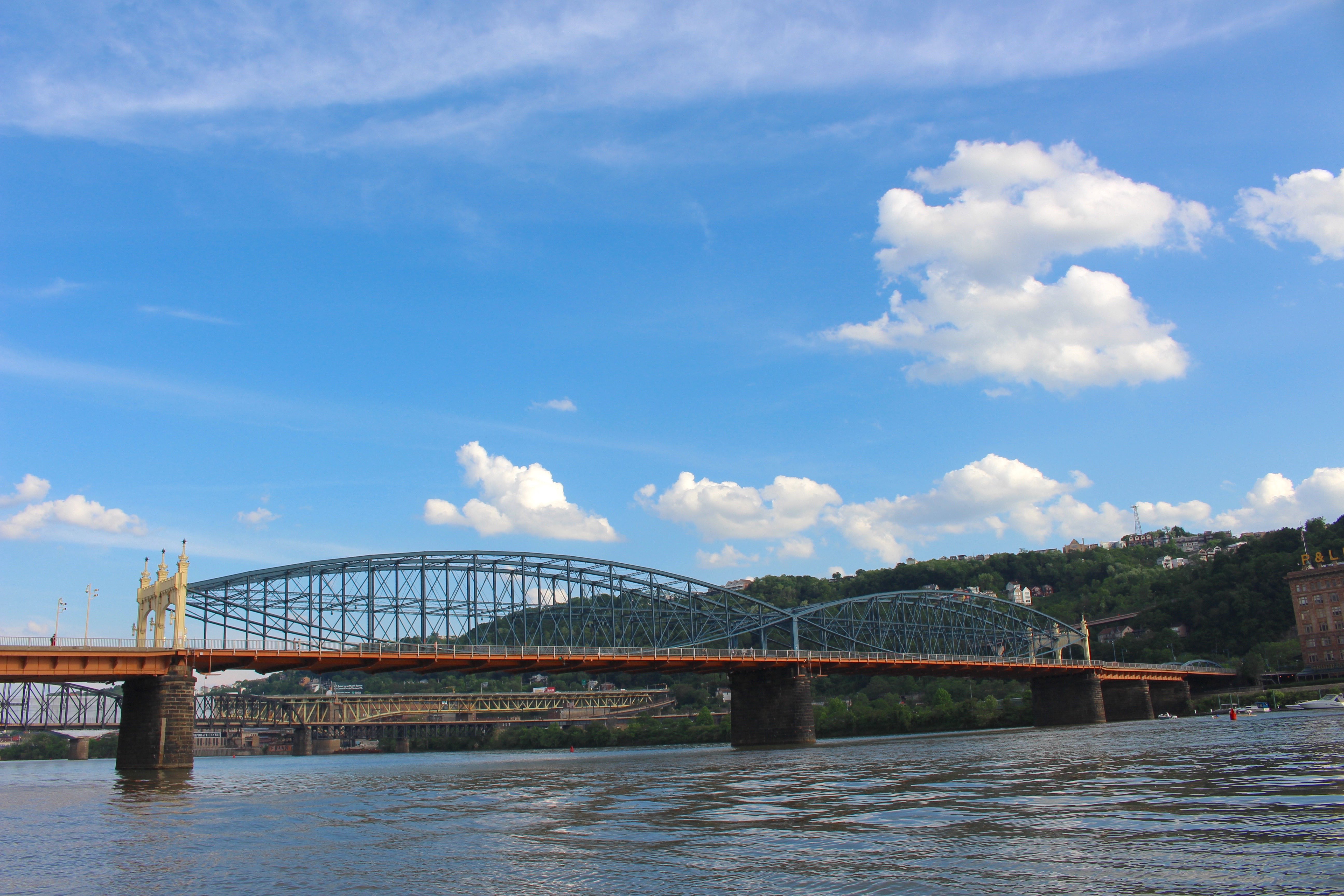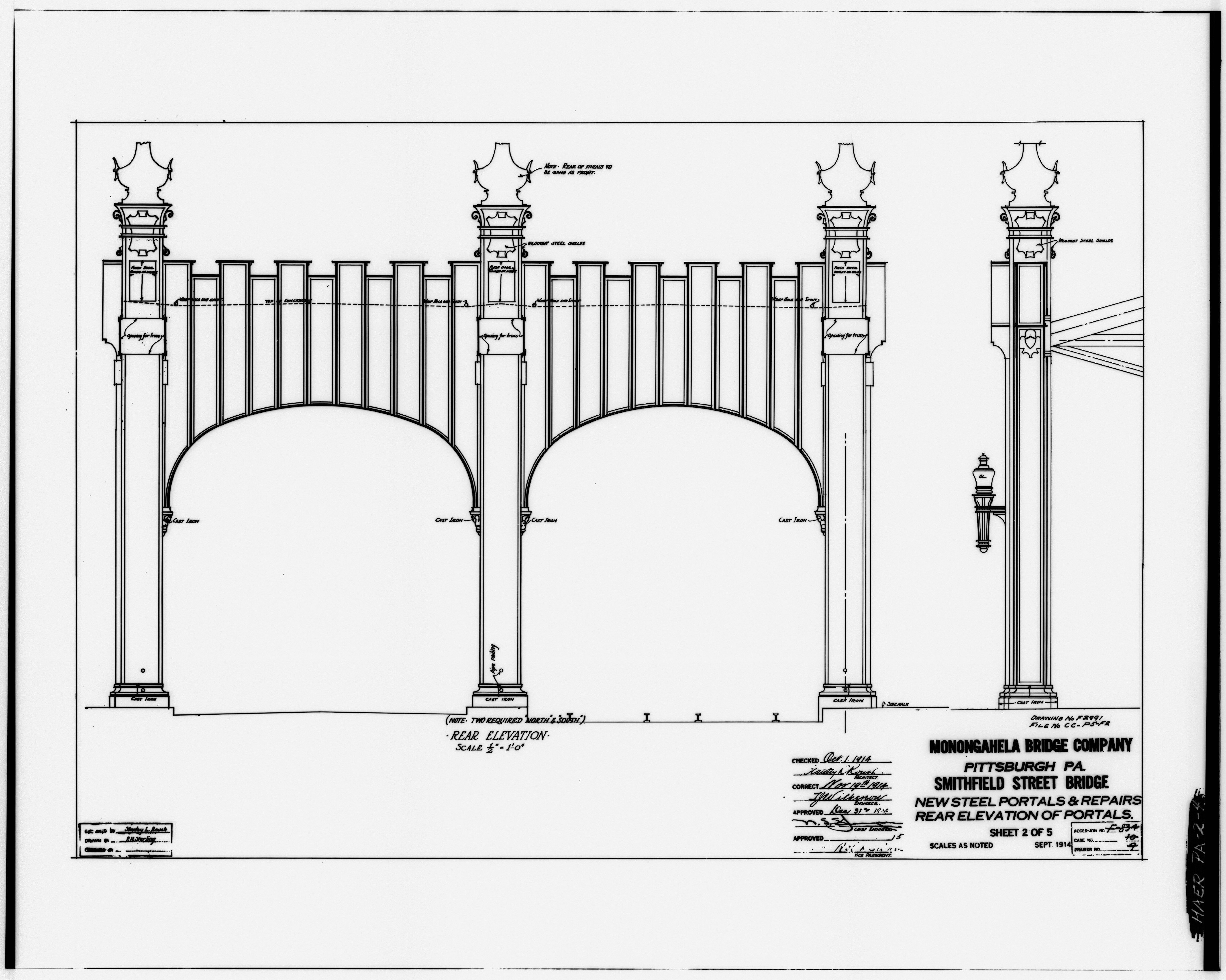Route Fifty Roadmap: Pittsburgh’s ‘Kissing Fish Bridge’

The Smithfield Street Bridge circa 1900. Detroit Publishing Co. via Library of Congress Prints and Photographs Division
The Smithfield Street Bridge is the oldest in the city and gets its nickname from a unique design feature.
Route Fifty Roadmap is an ongoing series of dispatches from the semi-regular travels of the Route Fifty staff around the United States. | PREVIOUSLY: Northeast Harbor, Maine
PITTSBURGH — As downtown emptied out here on a recent muggy Friday evening, the Smithfield Street Bridge hulked over the Monongahela River as it has done for more than a century.
Traffic and a handful of pedestrians moved across the span. And, near the bridge’s underside, on a concrete walkway that's part of an area known as the Monongahela Wharf Landing, a lone man sat working a book of number puzzles, a propped-up fishing pole beside him, its line dangling in the water.
In a city known for having about 440 bridges, the one at Smithfield Street is the oldest.
It opened in 1883 and connects Pittsburgh's South Shore with the heart of downtown. The 1,177-foot-long bridge has been altered since it was first built, but retains its signature steel trusses, which resemble a squashed, sideways figure eight.

“The older people in Pittsburgh call it the kissing fish bridge,” Bob Regan, author of “The Bridges of Pittsburgh,” said by phone Monday. The nickname, he explained, is a reference to the oval shape of the trusses, and the way they meet in the middle of the structure.

A wooden bridge completed in 1818 was the first river crossing constructed at the site, according to “A Century and a Half of Pittsburg And Her People, Vol. 2,” written by John Newton Boucher and published in 1908. The cost of that original structure was $102,000.
Referring to the bridge at Smithfield Street, and another at Sixth Street, Boucher wrote that they were both “covered bridges, which made them dismal thoroughfares by night, as they were only dimly lighted up to midnight by oil lamps.”
In the following years, two segments of the original span, which was known as the Monongahela Bridge, collapsed and were replaced. A portion of the bridge then burned in the Great Fire of 1845.
After that, John Roebling, who would go on to design the Brooklyn Bridge, engineered a suspension bridge at the site. It opened in 1846 and would later be replaced by the current structure.

The Smithfield Street Bridge was widened in 1889 to accommodate streetcars, which ran across it up until 1985, according to “Pittsburgh's Bridges” by Todd Wilson and Helen Wilson.
Figures included in a 1923 report from a group known as the Citizens Committee on City Plan of Pittsburgh show that, on two days in April of the previous year, 147 streetcars traveled out of the city’s core, over the bridge, between five p.m. and six p.m. That was about 21 percent of the average overall number of outbound streetcars from the downtown area at that time of day, which was 685.

A designated National Historic Civil Engineering Landmark and National Historic Landmark, the bridge underwent careful reconstruction in the 1990s. One Pennsylvania Department of Transportation engineer told The Pittsburgh Press that this undertaking was “the most challenging and complex project” he’d handled during his ten years working in the region.
The state owns and maintains the bridge. Its deck and other major components are in “fair” condition, according to PennDOT records.
Traffic volume data published in January show that, in 2014, an average of 13,000 vehicles crossed the bridge each day. A substantial amount, but far fewer than the 52,000 passing over the nearby Liberty Bridge, which lies about 1,700 feet to the east.
Bill Lucia is a reporter for Government Executive's Route Fifty
NEXT STORY: This Housing Authority Took App Delivery Into the Cloud






